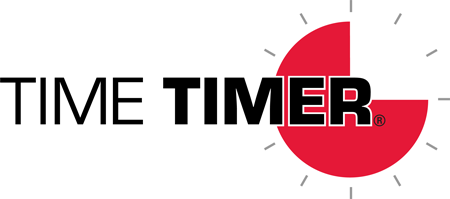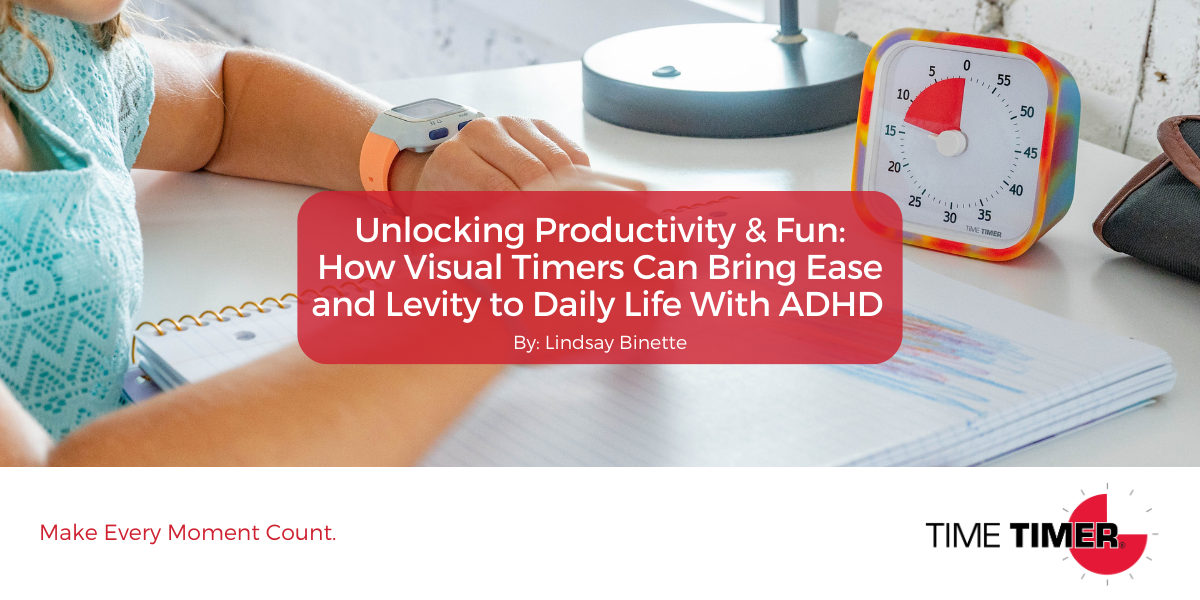Living with ADHD brings unique challenges, from maintaining focus to managing time effectively, which can lead to emotional dysregulation, frustration, and even shame. Each day can be different depending on the situation; however, with the right tools and strategies, everyday life can become more manageable and more enjoyable. As an ADHDer, I use a visual timer, specifically the Time Timer Dry Erase Board, to help me manage my time and gamify some of my tasks. As a mom to a six and three-year-old who need help managing expectations and knowing what’s coming next in their day, the added dry erase board to this timer works wonders to help manage my little ones' expectations of time and help us get things done as a family with ease and less yelling. As an ADHD coach, I recommend all my clients try a visual timer to help them increase their sense of time and add a little fun to tasks they may have been avoiding (ahem, doom piles!). In this blog post, we'll explore the unexpected and fun ways individuals with ADHD can use visual timers to enhance their daily routines.
1. Time-boxing Tasks with a Twist
Visual timers are fantastic for practicing time-boxing, a popular time management technique. Choose a timer on your computer to help visually and audibly signal the end of your time box. The Time Timer has several digital apps that can be downloaded to your Apple or Android products. ADHDers have an underdeveloped sense of time, so time boxing with a visual timer can help improve their sense of time and add fun and visual stimulation to their day.
2. Speed-Cleaning Challenges
Cleaning and organizing can be daunting for anyone, especially those with ADHD. Turn these chores into a game by setting a timer and challenging yourself to complete a cleaning task within a specific time frame. Try to beat your previous time or create a reward system for finishing early. The Time Timer Dry Erase Board is perfect for my kids - the visual timer makes it feel like a race against the clock, and writing the specific tasks on the board helps them (and me!) remember what we set out to clean up - all which can make cleaning up surprisingly fun family activity.
3. Cooking Adventures
For individuals with ADHD, cooking can sometimes be overwhelming due to multiple steps and time management. Visual timers can turn cooking into a fun experience. Set timers for different cooking stages. I love the Time Timer Twist for this because of its fun colors and magnetic backing. Attach it to your refrigerator, microwave, or oven to help you keep track of all the steps - It's like having a personal sous chef in your kitchen!
4. Pomodoro Play
The Pomodoro Technique, a time management method that involves working for a set period and then taking short breaks, can benefit ADHD individuals. Enhance this technique by using a visual timer and audible alert to mark the end of each work interval. It makes the process more engaging and helps maintain focus during work sprints, and the audible alert is a helpful cognitive interruption so you don’t get too lost in what you’re working on.
5. Creative Breaks
Using a timer doesn’t only have to be about getting things done and being productive; try using a timer to put boundaries on our creative breaks so we don’t get lost in hyperfocus or feel bad about taking a much-needed break. Whether it's sketching, writing, or crafting, having a timer that displays inspiring visuals or plays calming sounds can help you stay engaged and make the most of your creative moments. I often pair my creative breaks with my Time Timer Mod Tie Dye and a 30-minute creative flow playlist from Brain.fm to give myself a brain break or ignite a creative spark.
6. Motivation Through Movement
Exercise and movement are essential for managing ADHD symptoms, but it can be challenging to stay motivated. Visual timers can add an element of excitement to your workouts. Set a timer for each exercise or a dedicated time to get moving. You could try the Time Timer Max for this, and It's like having a personal trainer in your living room!
7. Mastering Mundane Tasks
Sometimes, the most mundane tasks become more bearable with a touch of creativity. Use a visual timer to spice up activities like folding laundry or tackling that doom pile on your counter. Challenge yourself to finish the task before the timer runs out, and reward yourself with a small treat or a short break.
The ADHD brain is wired for interest, not importance, but unfortunately, we all have to do things in life that we might not be interested in. A visual timer can help you tackle some uninteresting things by adding fun and igniting motivation - without too much rigidity. By customizing timers to suit your preferences and adding an element of creativity, you can turn even the most challenging tasks into enjoyable adventures. Embrace the power of visual timers and discover the unexpected joy they bring to your life with ADHD.

About Lindsay Binette:
After spending 18+ years in corporate brand marketing at Nike, Levi's, Nest/Google, Keds, and WS Development, Lindsay Binette founded The Wavy Brain, an ADHD Coaching and Neurodiversity Advisory Practice. Her personal journey with ADHD evolved into a passion for neurodiversity support, education, and advocacy. As part of her coaching practice, Lindsay specializes in working with career-focused and entrepreneurial adults, collaborating with them to leverage their neurodivergence as a strength in the workplace. Lindsay advises companies of all sizes to educate on neurodiversity and weave it into their core company values for a more inclusive workplace and authentic company culture. Lindsay also co-hosts The Wavy Brain podcast - listen wherever you get your podcasts for inspiring conversations at the intersection of work, life, and neurodiversity.




